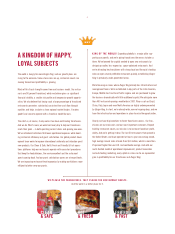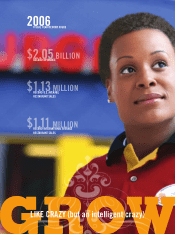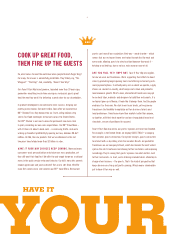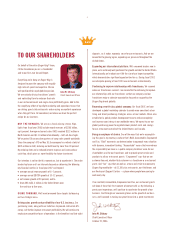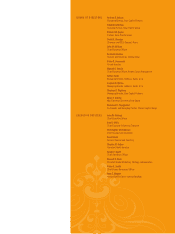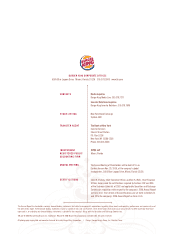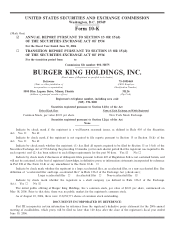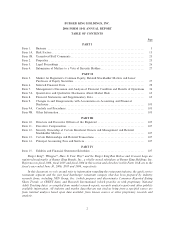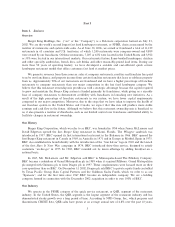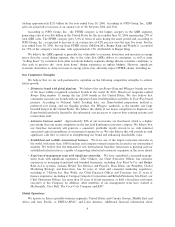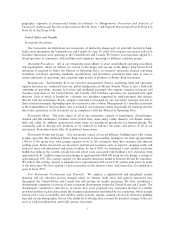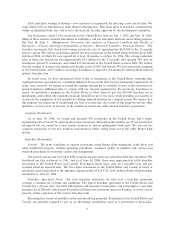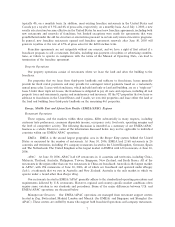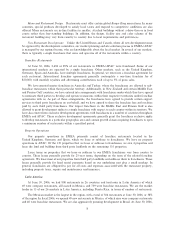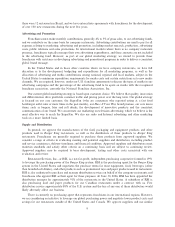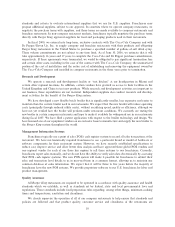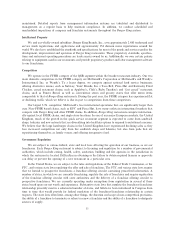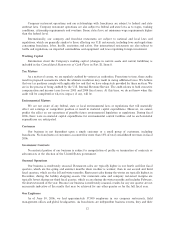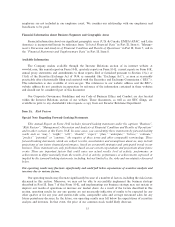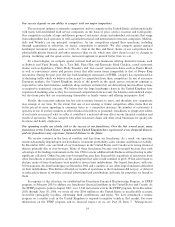Burger King 2006 Annual Report Download - page 16
Download and view the complete annual report
Please find page 16 of the 2006 Burger King annual report below. You can navigate through the pages in the report by either clicking on the pages listed below, or by using the keyword search tool below to find specific information within the annual report.totaling approximately $213 billion for the year ended June 30, 2006. According to NPD Group, Inc., QSR
sales are projected to increase at an annual rate of 4% between 2006 and 2011.
According to NPD Group, Inc., the FFHR category is the largest category in the QSR segment,
generating sales of over $56 billion in the United States for the year ended June 30, 2006 representing 27% of
total QSR sales. The FFHR category grew 3.0% in terms of sales during the same period and, according to
NPD Group, Inc., is expected to increase at an average rate of 4.2% per year over the next five years. For the
year ended June 30, 2006, the top three FFHR chains (McDonald's, Burger King and Wendy's) accounted
for 73% of the category's total sales, with approximately 15% attributable to Burger King.
We believe the QSR segment is generally less vulnerable to economic downturns and increases in energy
prices than the casual dining segment, due to the value that QSRs deliver to consumers, as well as some
""trading down'' by customers from other restaurant industry segments during adverse economic conditions, as
they seek to preserve the ""away from home'' dining experience on tighter budgets. However, significant
economic downturns or sharp increases in energy prices may adversely impact FFHR chains, including us.
Our Competitive Strengths
We believe that we are well-positioned to capitalize on the following competitive strengths to achieve
future growth:
‚Distinctive brand with global platform. We believe that our Burger King and Whopper brands are two
of the most widely-recognized consumer brands in the world. In 2005, Brandweek magazine ranked
Burger King number 15 among the top 2,000 brands in the United States. We also believe that
consumers associate our brands with our signature flame-broiled products and Have It Your Way brand
promise. According to National Adult Tracking data, our flame-broiled preparation method is
preferred over frying, and our flagship product, the Whopper sandwich, is the number one large
branded burger in the United States. We believe the ability of our major competitors to duplicate our
flame-broiled method is limited by the substantial cost necessary to convert their existing systems and
retrain their staff.
‚Attractive business model. Approximately 90% of our restaurants are franchised, which is a higher
percentage than our major competitors in the fast food hamburger restaurant category. We believe that
our franchise restaurants will generate a consistent, profitable royalty stream to us, with minimal
associated capital expenditures or incremental expense by us. We also believe this will provide us with
significant cash flow to reinvest in strengthening our brand and enhancing shareholder value.
‚Established and scalable international business. We have one of the largest restaurant networks in
the world, with more than 3,900 franchise and company-owned restaurants located in our international
markets. We believe that the demand for new international franchise restaurants is growing and our
established infrastructure is capable of supporting substantial restaurant expansion in the years ahead.
‚Experienced management team with significant ownership. We have assembled a seasoned manage-
ment team with significant experience. John Chidsey, our Chief Executive Officer, has extensive
experience in managing franchised and branded businesses, including Avis Rent-A-Car and Budget
Rent-A-Car systems, Jackson Hewitt Tax Services and PepsiCo. Russ Klein, our President, Global
Marketing Strategy and Innovation, has 26 years of retail and consumer marketing experience,
including at 7-Eleven Inc. Ben Wells, our Chief Financial Officer and Treasurer, has 25 years of
finance experience, including at Compaq Computer Corporation and British Petroleum. Jim Hyatt, our
Chief Operations Officer, has more than 30 years of brand experience as both a franchisee and senior
executive of the Company. In addition, other members of our management team have worked at
McDonald's, Taco Bell, The Coca-Cola Company and KFC.
Global Operations
We operate in three reportable business segments: United States and Canada; Europe, Middle East and
Africa and Asia Pacific, or EMEA/APAC; and Latin America. Additional financial information about
4


